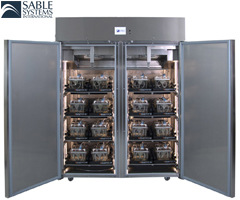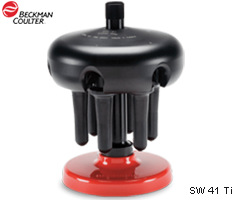業(yè)內快訊
《自然》(20201224出版)一周論文導讀
 時間:2020-12-29
時間:2020-12-29
 來源:
來源:
 瀏覽量:1835
瀏覽量:1835

環(huán)境科學Environmental Sciences
Maximizing US nitrate removal through wetland protection and restoration
通過保護和恢復濕地來最大程度地去除硝酸鹽
▲ 作者:F. Y. Cheng, K. J. Van Meter, D. K. Byrnes & N. B. Basu
▲ 鏈接:
https://www.nature.com/articles/s41586-020-03042-5
▲ 摘要
人口增長和農業(yè)集約化導致了河流氮負荷的增加,沿海地區(qū)廣泛的河流氮含量和藻華發(fā)生率的增加。
本文利用國家濕地調查數(shù)據(jù)和5公里網(wǎng)格尺度的氮輸入和輸出估計表明,美國濕地當前的氮減少(約860±160千噸氮/年)受到高密度濕地和氮熱點之間的空間脫節(jié)的限制。
我們的模型表明,美國濕地面積的空間目標增加10%(510萬公頃)將使?jié)竦氐娜コ吭黾右槐丁_@一增長將使諸如密西西比河流域等受硝酸鹽影響的流域的氮負荷估計減少54%。
▲ Abstract
Growing populations and agricultural intensification have led to raised riverine nitrogen (N) loads, widespread oxygen depletion in coastal zones (coastal hypoxia) and increases in the incidence of algal blooms. Here we use National Wetland Inventory data and 5-kilometre grid-scale estimates of N inputs and outputs to demonstrate that current N removal by US wetlands (about 860 ± 160 kilotonnes of nitrogen per year) is limited by a spatial disconnect between high-density wetland areas and N hotspots. Our model simulations suggest that a spatially targeted increase in US wetland area by 10 per cent (5.1 million hectares) would double wetland N removal. This increase would provide an estimated 54 per cent decrease in N loading in nitrate-affected watersheds such as the Mississippi River Basin.
材料科學Material Science
Xolography for linear volumetric 3D printing
X線照相體積光固化3D打印技術
▲ 作者:Martin Regehly, Yves Garmshausen, Marcus Reuter, Niklas F. K?nig, et al.
▲ 鏈接:
https://www.nature.com/articles/s41586-020-3029-7
▲ 摘要
增材制造的應用范圍正在迅速擴大,包括運動鞋部件、牙科陶瓷和航空航天部件的大規(guī)模生產(chǎn),以及微流體、醫(yī)療設備和人工器官的制造。立體3D打印是連續(xù)增材制造方法的下一步。
在此,我們向大家介紹X線照相體積3D打印,一種使用可以光轉換的光引發(fā)劑,通過相交不同波長的光束進行線性激發(fā),誘導特定的單體體積內局部聚合的雙光技術。
我們用一臺體積打印機演示了這一概念,該打印機可以生成具有復雜結構特征以及機械和光學功能的三維物體。與最先進的體積打印方法相比,該技術的分辨率約為無反饋優(yōu)化的計算軸向光刻的10倍,體積產(chǎn)生速率比雙光子光聚合3D打印技術高4 - 5個數(shù)量級。
▲ Abstract
The range of applications for additive manufacturing is expanding quickly, including mass production of athletic footwear parts, dental ceramics and aerospace components as well as fabrication of microfluidics, medical devices, and artificial organs. Volumetric 3D printing is the next step onward from sequential additive manufacturing methods. Here we introduce xolography, a dual colour technique using photoswitchable photoinitiators to induce local polymerization inside a confined monomer volume upon linear excitation by intersecting light beams of different wavelengths. We demonstrate this concept with a volumetric printer designed to generate three-dimensional objects with complex structural features as well as mechanical and optical functions. Compared to state-of-the-art volumetric printing methods, our technique has a resolution about ten times higher than computed axial lithography without feedback optimization, and a volume generation rate four to five orders of magnitude higher than two-photon photopolymerization.
Strongly correlated Chern insulators in magic-angle twisted bilayer graphene
魔角扭曲雙層石墨烯中的強相關Chern絕緣子
▲ 作者:Kevin P. Nuckolls, Myungchul Oh, Dillon Wong, Biao Lian, Kenji Watanabe
▲ 鏈接:
https://www.nature.com/articles/s41586-020-3028-8
▲ 摘要
在魔角扭曲雙層石墨烯(MATBG)中發(fā)現(xiàn)具有拓撲特征的扁平電子帶,為尋找強相關的拓撲相創(chuàng)造契機。
在此,我們過掃描隧道電子顯微鏡中引入局部光譜表征技術,發(fā)現(xiàn)在MATBG材料中Chern number為C=±1, ±2, ±3時,分別在單位晶格中形成填充因子為±3, ±2, ±1表現(xiàn)的一系列拓撲絕緣態(tài),并且這種拓撲相通過強度適中的磁場穩(wěn)定。
這里檢測到的一個相(C = +1)是此前觀察到的,當六方氮化硼襯底故意打破MATBG的亞晶格對稱性時,相互作用具有次要作用。我們證明,僅強的電子-電子相互作用不僅可以產(chǎn)生先前觀察到的相,而且還可以在MATBG中產(chǎn)生未預料的Chern絕緣相。
▲ Abstract
The discovery of flat electronic bands with topological character in magic-angle twisted bilayer graphene (MATBG) has created a unique opportunity to search for strongly correlated topological phases. Here we introduce a local spectroscopic technique using a scanning tunnelling microscope to detect a sequence of topological insulators in MATBG with Chern numbers C = ±1, ±2 and ±3, which form near filling factors of ±3, ±2 and ±1 electrons per moiré unit cell, respectively, and are stabilized by modest magnetic fields. One of the phases detected here (C = +1) was previously observed when the sublattice symmetry of MATBG was intentionally broken by a hexagonal boron nitride substrate, with interactions having a secondary role. We demonstrate that strong electron–electron interactions alone can produce not only the previously observed phase, but also other unexpected Chern insulating phases in MATBG.
物理學Physics
Plasmonic topological quasiparticle on the nanometre and femtosecond scales
納米級和飛秒級的等離子拓撲準粒子
▲ 作者:Yanan Dai, Zhikang Zhou, Atreyie Ghosh, Roger S. K. Mong, et al.
▲ 鏈接:
https://www.nature.com/articles/s41586-020-3030-1
▲ 摘要
在經(jīng)典物理學和量子物理學的層面,麥克斯韋和薛定諤方程描述了光場如何驅動和控制電子現(xiàn)象,以使光波電子在太赫茲或千赫頻率和超小尺度成為可能。撞擊金屬的光電場與電子相互作用,在一秒的時間尺度上產(chǎn)生光物質準粒子,如激子或等離子體激子。
在此,我們在結構銀膜中創(chuàng)建并成像一個具有拓撲等離子體自旋結構的準粒子。這些自旋織構位于光的半波長范圍內,并且存在于等離子體場的時間尺度上。
我們使用超快非線性相干光電子顯微鏡生成了渦旋場空間演化的阿秒影像;電磁模擬和解析理論證實了等離子體梅隆準粒子的存在。準粒子形成手性場,在納米空間尺度和20飛秒(納米飛秒尺度)上打破了時間反轉的對稱性。
▲ Abstract
At the interface of classical and quantum physics, the Maxwell and Schr?dinger equations describe how optical fields drive and control electronic phenomena to enable lightwave electronics at terahertz or petahertz frequencies and on ultrasmall scales. The electric field of light striking a metal interacts with electrons and generates light–matter quasiparticles, such as excitons or plasmons, on an attosecond timescale. Here we create and image a quasiparticle of topological plasmonic spin texture in a structured silver film. These spin textures are localized within a half-wavelength of light, and exist on the timescale of the plasmonic field. We use ultrafast nonlinear coherent photoelectron microscopy to generate attosecond videos of the spatial evolution of the vortex fields; electromagnetic simulations and analytic theory confirm the presence of plasmonic meron quasiparticles. The quasiparticles form a chiral field, which breaks the time-reversal symmetry on a nanometre spatial scale and a 20-femtosecond timescale (the ‘nano-femto scale’).
Superconducting qubit to optical photon transduction
超導量子位到光子的轉換
▲ 作者:Mohammad Mirhosseini, Alp Sipahigil, Mahmoud Kalaee & Oskar Painter
▲ 鏈接:
https://www.nature.com/articles/s41586-020-3038-6
▲ 摘要
光電信號的轉換是全球互聯(lián)網(wǎng)的基礎。這種轉換器用于擴大長途光纖通信系統(tǒng)的范圍,并用于數(shù)據(jù)中心內計算機的高速光網(wǎng)絡。盡管量子網(wǎng)絡前景廣闊,但仍未實現(xiàn)利用超導量子位元在這種轉換過程中維持脆弱的量子態(tài)。
在此,我們演示了超導量子位跨頻激發(fā)到光子的微波頻率的轉換。
我們利用一個中間的納米機械諧振器,通過壓電相互作用將量子比特的電激勵轉化為單個聲子,然后通過輻射壓力將聲子轉化為光子。我們通過在光纖上探測發(fā)射光的單光子來記錄量子位元的量子拉比振蕩,從而證明從量子位元產(chǎn)生光子的過程。
▲ Abstract
Conversion of electrical and optical signals lies at the foundation of the global internet. Such converters are used to extend the reach of long-haul fibre-optic communication systems and within data centres for high-speed optical networking of computers. Despite the prospects of quantum networking, maintaining the fragile quantum state in such a conversion process with superconducting qubits has not yet been achieved. Here we demonstrate the conversion of a microwave-frequency excitation of a transmon—a type of superconducting qubit—into an optical photon. We achieve this by using an intermediary nanomechanical resonator that converts the electrical excitation of the qubit into a single phonon by means of a piezoelectric interaction and subsequently converts the phonon to an optical photon by means of radiation pressure. We demonstrate optical photon generation from the qubit by recording quantum Rabi oscillations of the qubit through single-photon detection of the emitted light over an optical fibre.
人工智能Artificial Intelligence
Mastering Atari, Go, chess and shogi by planning with a learned model
建立學習模型掌握Atari游戲、圍棋、國際象棋和將棋
▲ 作者:Julian Schrittwieser, Ioannis Antonoglou, Thomas Hubert, Karen Simonyan, et al.
▲ 鏈接:
https://www.nature.com/articles/s41586-020-03051-4
▲ 摘要
構建具有規(guī)劃能力的智能體一直是人工智能研究的主要挑戰(zhàn)之一。然而,在現(xiàn)實問題中,控制環(huán)境的動態(tài)往往是復雜和未知的。
在此,我們提出MuZero算法。該算法通過將基于樹的搜索與一個學習模型相結合,在一系列具有挑戰(zhàn)性和視覺上復雜的領域中實現(xiàn)了超人的性能,而不需要了解它們的底層動力學。
MuZero算法學習一個可迭代的模型,該模型產(chǎn)生與計劃相關的預測:行動選擇策略、價值函數(shù)和獎勵。我們在57個不同的Atari游戲上進行評估時,MuZero算法實現(xiàn)了最先進的性能。
▲ Abstract
Constructing agents with planning capabilities has long been one of the main challenges in the pursuit of artificial intelligence. However, in real-world problems, the dynamics governing the environment are often complex and unknown. Here we present the MuZero algorithm, which, by combining a tree-based search with a learned model, achieves superhuman performance in a range of challenging and visually complex domains, without any knowledge of their underlying dynamics. The MuZero algorithm learns an iterable model that produces predictions relevant to planning: the action-selection policy, the value function and the reward. When evaluated on 57 different Atari games—the canonical video game environment for testing artificial intelligence techniques, in which model-based planning approaches have historically struggled—the MuZero algorithm achieved state-of-the-art performance.
文章參考 科學網(wǎng); 翻譯 | 李言;編輯|宗華















